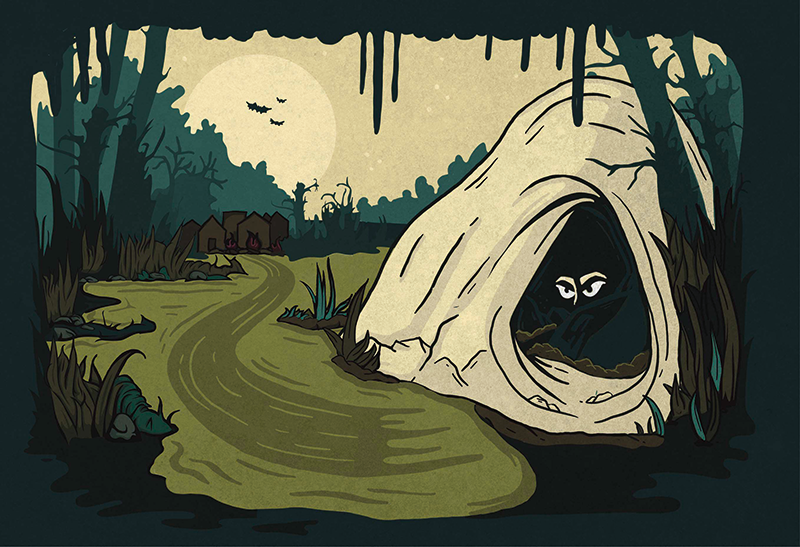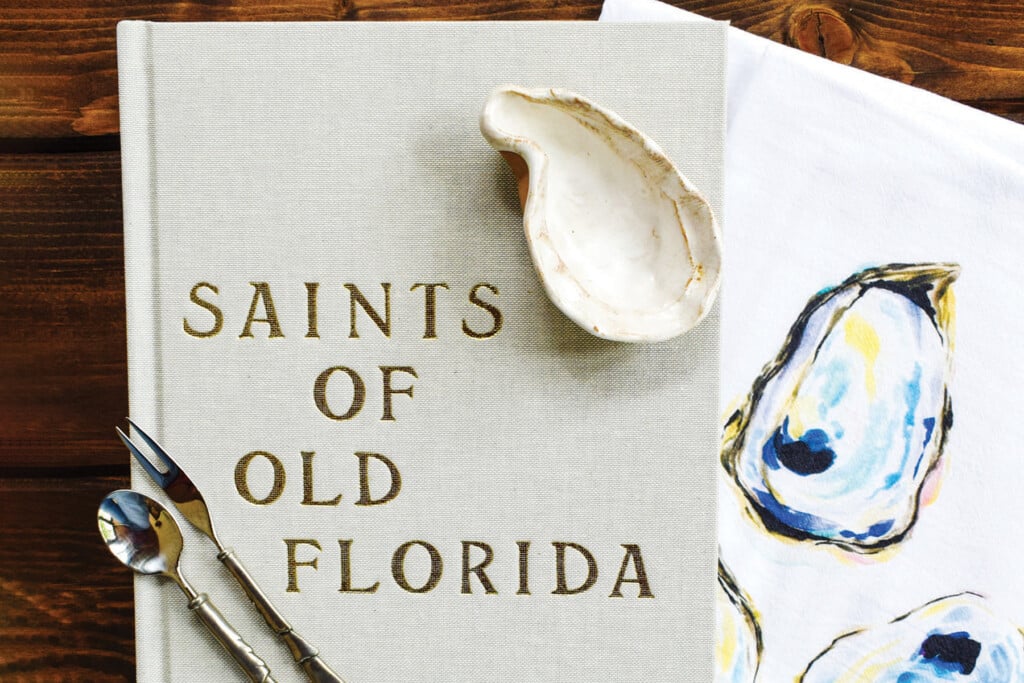The Wild Man of Ocheesee Swamp
Inspired by a true story from the summer of 1884

Irvin wasn’t quite sure when the wildness began. Perhaps it was in the battle itself when a bullet seared through his leg and then shrapnel from an exploding cannonball entered his skull. He struggled for life in a primitive field hospital at Chickamauga in 1863. His body survived the surgeries and fevers but not his mind, and no one seemed to care when he wandered off after three months — wandered away from what was left of the bloody Civil War, no longer capable of being a soldier.
He generally walked in a southerly direction, through his land of Dixie, scouring for vegetables in farm fields and foraging on berries and roots. He was scarred in every way and avoided humans whenever possible. Months, and even years, passed. Family became a vague dream. Faces, names and familiar places faded; he knew not how to find them, and slowly he forgot. Eventually, even his own name escaped him along with words. And when the last of his clothes tore away from him, he did nothing to replace them, and dark hair began to grow in all places of his body. When his boots fell away, his feet became as tough as bear paws.
Perhaps the moment he knew he had crossed into being a wild animal was when he came upon an old plantation house at dusk thinking it abandoned. A large bulldog came after him, and upon being confronted with the snarling beast, something took hold of him. He snarled back. Then, he reared up with claw-like fingernails and bared his teeth. This was followed by a guttural scream that sent the dog running. Afterward, he was less afraid of wild beasts, and they generally gave him space. He could howl like the wolves that roamed the forests and could scream nearly as loud as a wildcat. Yet, he could also be gentle. Once, he found a hidden fawn. He sat and stroked it for a spell and left it unharmed.
He wrestled with a playful bear cub one spring but knew enough to back away when mother bear rushed out from the brush. He learned from watching bears. Most of what they ate, he could eat. He could even catch fish with his bare hands or spear them with his fingernails and slice them open to eat the meat.
His closest call with death came when he tried to cross a swollen stream and was swept downstream. Upon emerging onto shore, gasping for breath and his vision blurry, a coiled water moccasin struck him on the hand and caused a burning pain much like the Yankee bullet years before. His hand and arm became purple and swollen and he was delirious for days.
He lived in a cave for a spell, a sheltered place with clean water and a near-constant temperature. By the blackened ceilings and chipped stone, he knew native people had once lived there for generations. His dreams were the most vivid then. During sleep, he roamed with the spirits of the former occupants — watched their ways, heard their stories, saw how they lived and died. He felt kinship, but one day a wagon pulled up and men began unloading supplies for a whiskey still. He had to wait until dark to slip past and continue his wandering.
Deep in the forest, he once encountered a Muscogee Indian elder, someone nearly as secretive as him. The man started chanting when he saw him and slowly backed away, but not before leaving food and tobacco as a type of offering to a living and breathing mythological creature.
The longer the wild man roamed, the more he sought a place where no humans lived. When he reached the vast cypress forests of Ocheesee Swamp in North Florida, he stopped his roaming and moved from island to island in search of food and a feeling of peace. Here he felt safe. Here was home. Still, hunger pangs frequently wracked his body, always hunger. Gnawing from inside.
Eventually, he was spotted by some of the pioneer settlers who lived on the outskirts, and many heard his anguished cries at night. Men formed a team to find him, many of whom had served in the Confederate Army. They came with guns, ropes and dogs, moving from island to island until they surrounded him and closed in with screams and yells. They seemed afraid of him as he snarled and howled and thrashed at them with his long fingernails. But they did not shoot. Instead, they snared him with ropes and dragged him through the swamp, afraid to touch or get close, and once on land they caged him as they would a prized hog and gazed at him with a combination of fear and fascination, wondering who he was or what he was. A skunk ape, some said, a Sasquatch. The missing link. He couldn’t be a man. No man could turn into such an animal. The mere idea seemed to frighten them, that people might not be so far removed from wild animals, that it could take just a few years and hair would cover the body and fingernails would become claws and a species so proud of their forward evolution could revert back to something before organized civilization.
When adults weren’t looking, children poked him with sticks, and when he howled at them, they ran in fear, only to be pulled back for more, drawn in by the mystery and prodded by the dares of friends.
The people gave him food and water as they would a dog. They talked and pointed, and whiskey jugs were passed around. “We got us a real skunk ape!” exalted Zeke, one of the searchers. “We’re all going to be famous!”
Becky, his wife, wasn’t so convinced. She approached the cage and scrunched up her nose. “But what if he’s not?”
“What do you mean, woman?”
“I mean just that, what if he’s not? I been thinking real hard on it, and doing some praying. What if he was born to a God-fearing Christian family and somehow got that way, maybe in the war?”
“No, couldn’t be! You’re just trying to ruin our excitement.”
Becky scrunched up her nose again and looked closer at the creature thrashing about in the cage. “It could be. It just could be.”
Zeke’s mood sobered quickly. “Maybe we should have just shot him and buried him in the swamp.”
“Might have been the merciful thing to do, all right. But if he is a man, he got that way somehow and maybe he can go back to being a civilized man.” She glanced at Zeke and snickered, and decided not to say more, but the question gnawed at her. What if …
Zeke gulped whiskey from a nearby jug as Becky walked away. “No way a man could get like that. That’s a skunk ape. The first ever captured skunk ape. We’re all going to be famous.” But his enthusiasm had faded, doubt creeping in like swamp water.
Eventually, they put his caged body in a wagon and took him to the state mental hospital in nearby Chattahoochee to see if the creature was really a madman who had escaped, but there was no record of an escapee. He was then taken to Tallahassee where more fancy-dressed doctors pointed and wondered. “The teeth,” said one, “we must see the teeth.” Four men held down the creature and after several attempts, the doctor examined his teeth, or the few that remained in his mouth. “Those are not the teeth of an animal!” He announced, finally. “This is a man, a madman.” Wires were sent to mental hospitals in other states; responses came in. No escapees matched the description. Word spread of the wild man. Dispatches were sent through Florida, Georgia and Alabama, but since the wild man did not talk and had no belongings, details remained sketchy.
Eventually, the wild man was sent back to the state mental hospital in Chattahoochee where his screams and cries were considered strange even by those who had been sent there for being mad. Orderlies held him and shaved his face, cut his hair, bathed and clothed him, and trimmed his nails as much for their own protection as appearance. And as the wild man ate regular food and was confined indoors, and heard the talk of humans, he slowly began to resemble a man again. During a dream, a voice called to him as if from a distant cloud, a woman’s voice, one very familiar — perhaps his mother’s. “Irvin,” she said over and over, “Irvin.” So one day, instead of screams, he uttered the one word he knew. After that, the orderlies and doctors no longer called him The Wild Man of Ocheesee Swamp, but Irvin. The man who had once lived as an animal, the man who could only speak his name.
Meet the Author
Doug Alderson is an award-winning writer, photographer and naturalist. Alderson lives in Tallahassee but regularly travels the state. No matter where he lands, you can be sure to find Alderson in, on and around Florida’s rivers, lakes and coastal shores. From his kayak, Alderson finds inspiration for his works including Spooky Stories from the Swamp, Florida’s Rivers, Discovering Florida’s Coasts and others.
Where to Find It
The Wild Man of Ocheesee Swamp first appeared in Doug Alderson’s Spooky Stories from the Swamp, a collection of short stories based on Alderson’s firsthand accounts, experiences and impressions of Florida swamplands. Alderson’s fictional account of the 1884 Ocheesee Wild Man is based on real events. First published in 2020, the Spooky Stories from the Swamp collection is a publication of the Palm Beach-based Pineapple Press.


